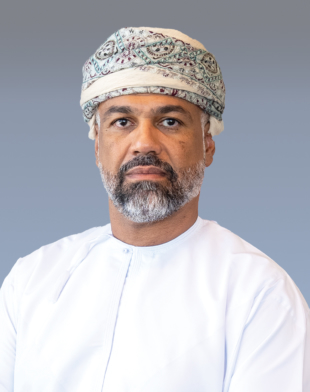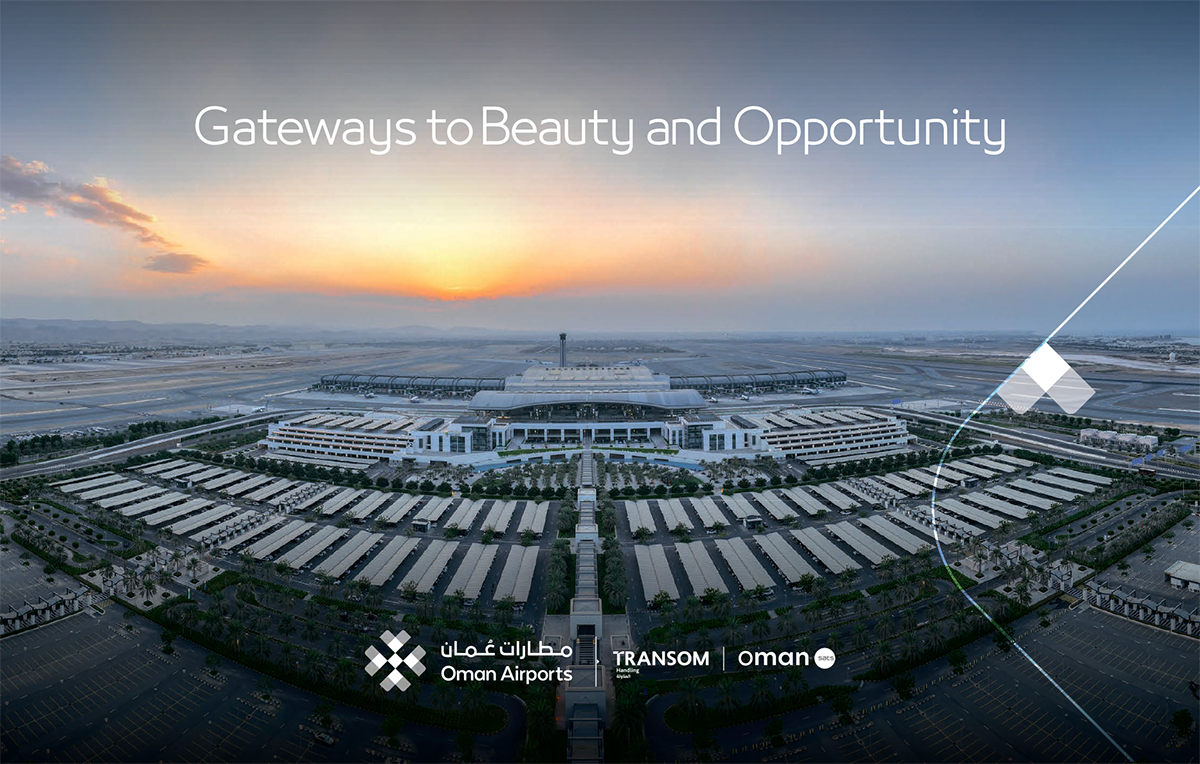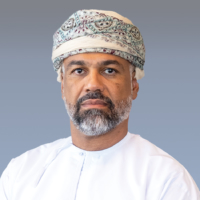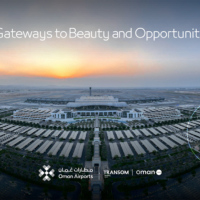Identified as a priority sector that can help to deliver the objective of creating a diversified and sustainable economy, the tourism industry in Oman is experiencing a transformative period. Major investments have been announced in recent years and there has been significant growth in domestic and international traffic.
The ultimate aim is for the sultanate to position itself as a leading destination in the Middle East. To achieve this, there are plans to enhance its tourism offerings by differentiating itself in an increasingly competitive region. This has seen Oman prioritizing responsible tourism developments that preserve the natural environment and cultural heritage.
The government is actively promoting cultural and historical sites, including UNESCO World Heritage locations such as Bahla Fort, the ancient city of Qalhat and the so-called Land of Frankincense near Salalah. Oman is also leveraging its diverse landscapes, from soaring mountains and vast deserts to picturesque coastlines, to attract adventure travelers through initiatives like ziplines, cable cars and mountain trails.
In addition to the work being carried out by the Ministry of Heritage and Tourism, Oman Airports is supporting the development of the tourism industry by enhancing airport infrastructure. The state-owned management company is actively involved in developing and improving airports across the country.

“Oman Airports operates the key airports in the sultanate, including Muscat Airport, which is the biggest in the country, Salalah Airport, which is the second-biggest, and Sohar Airport. We also operate Duqm Airport on behalf of the special economic zone there,” said Hamood al Alawi, the acting CEO of Oman Airports. “In addition, we operate three desert-based airports that serve the country’s oil and gas industry.
“We work very closely with our partners in the aviation ecosystem and the wider tourism sector, including with the Ministry of Heritage and Tourism and the Oman Tourism Development Company. We are totally aligned with Vision 2040’s objectives to boost tourism and attract business to the sultanate.
“We are also helping our partner, national carrier Oman Air, as it goes through its own transformation and resizing, which has impacted connectivity. They are rebounding now and going for growth, and we support them as they try to bring more tourists to the country.
“We are also working with them to encourage other airlines here by introducing incentive schemes that would make the Omani market more attractive. We participate in international and regional events to meet with airlines to increase our network and the connectivity of our airports.
“We have also been working with travel agents and brokers, locally and internationally, to enhance the connectivity of Salalah Airport. There is a lot of appetite, especially from Eastern Europe, for Salalah, and we are now seeing these initiatives bearing fruit, in the form of increased tourist numbers in both Muscat and Salalah.”
With Oman aiming to attract 12 million visitors annually by 2040, connectivity has become increasingly important. That is why Oman Airports is implementing new strategies to attract new international airlines and expand direct routes to and from key global markets.
“Route development is the cornerstone of our commercial strategy. One of our many strategies is to develop a package of incentives and offerings, which we promote at international events, such as international travel symposiums, and world travel markets,” he said.
“We are very selective about where to participate and use targeted strategies to make value propositions to other airlines to encourage them to come to Oman. This brought six airlines to Oman in 2024, and we hope there will be more by the end of 2025.
“We are working on several fronts to make it easy and appealing for airlines to establish themselves in Oman. We see this working, especially in Salalah, where chartered flights saw a big increase in the second half of 2024 and early 2025. We also began scheduled flights between Zurich and Muscat to Salalah, which is unprecedented and is one of the few direct international connections between Salalah and Europe.
“We are also working on joint offerings with Oman Air to provide loyalty schemes that can be used at duty-free or our other facilities. We have increased the number of car rental outlets, and we are reviewing and revamping the entire food-and-beverages part of the duty-free area. To further support these initiatives, we are also helping to develop real estate around the airport, centered around the airport’s three main gates.”
Improving connectivity remains vitally important and already this year Oman Air has announced that it will improve its European network to include an Amsterdam service and daily flights to Moscow.
Furthermore, Oman Airports is working tirelessly to create an exceptional travel experience through a host of new initiatives. “Our focus on technology and innovation distinguishes Oman’s airports. Initiatives like e-gates streamline processes, enhancing both the passenger experience and revenue,” al Alawi said.
“We’re also revamping duty-free areas to offer authentic Omani experiences, setting us apart regionally. Our ongoing ICT (information and communications technology) transformation includes upgrading systems at Muscat Airport and using AI (artifical intelligence) and passenger diagnostics to improve crowd management.
“By 2026, we expect noticeable improvements in passenger experiences, and we continue to gather feedback to ensure we meet traveler needs.”
A focus on sustainability
Investing in sustainability has become a cornerstone of Oman’s tourism strategy and the country remains on a mission to preserve its natural treasures by embracing eco-friendly initiatives. One of the ways it is achieving this is through the development of eco-lodges, or green inns, which provide sustainable accommodation and contribute to local economies.
By the end of 2024, there were more than 150 eco-lodges throughout the sultanate. What they all have in common is that they offer tourists authentic experiences of Oman’s natural beauty and cultural heritage.
Such is the dedication to sustainable tourism practices that Sultan Haitham bin Tariq issued three royal decrees in 2024 establishing new nature reserves. Reaffirming a commitment to safeguarding its rich biodiversity, unique ecosystems and geological heritage, the newly designated reserves — Al Jabal al Gharbi, Al Dhahirah and Wahat al Buraimi — take the total number of nature reserves in Oman to 30.
Oman Airports is also doing its part by incorporating sustainability into its operations in a bid to reduce its environmental footprint.
“We are addressing sustainability in two ways. The first is to review the basics and make sure that our existing facilities and practices are as efficient as possible. We are reducing our operational energy and water consumption. We are working with a consultant to drive down energy consumption in a mutual-benefit arrangement, which will reduce our consumption and our carbon footprint,” al Alawi said.
“Secondly, in line with Oman’s push for renewable energy, we recently opened the region’s first hydrogen fuel station at the airport with Shell, supporting hydrogen-powered vehicles. We’re also exploring solar panel installations. Sustainability standards are part of all agreements with facility users, ensuring carbon-emission targets are met. The cargo company has achieved 96% electrification of its fleet, showcasing our commitment to sustainability at all levels. So we are addressing sustainability on several fronts and at various levels, and sustainability will always feature prominently in our portfolio.”
Attracting visitors from Japan
One of the ways that Oman hopes to reach its ambitious tourism targets is by enhancing connectivity with Japan. The two countries share deep cultural and historical connections, particularly as maritime nations. Cultural ties have also flourished in recent years, with numerous events being held throughout the sultanate.
Last year, a group of Japanese manga artists were invited by the Ministry of Culture, Sports and Youth to visit Oman and share the art of manga creation. The Oman Japan Friendship Association also organized an event that saw a Japanese orchestra perform at the Royal Opera House Muscat.
More recently, Oman and Japan signed an agreement to allow the national carriers to extend their operational networks and begin planning to operate direct passenger and air cargo flights between the countries.
“This collaboration between Oman and Japan aims to enhance connectivity. We are exploring the best ways to make this partnership work, possibly through new models involving both Japan Airlines and Oman Air. Our main objective is to make sure that Japanese visitors to Oman get the best that we have to offer, so we will continue to explore the expectations and dynamics of the Japanese market in association with our partners, and incorporate that into our work,” al Alawi said.
“As our slogan says, Oman is the gateway to beauty and opportunity. Oman distinguishes itself from other countries in the region by preserving its character and heritage — a unique value proposition, which is something that we have in common with Japan.
“We’re committed to welcoming the Japanese market, and the positive feedback has set us apart in the region. The journey has just begun, and while there’s much ahead, our hopes and expectations are high.”
https://info.japantimes.co.jp/international-reports/pdf/20250625B-GI_Oman.pdf
https://global-insight.net/





